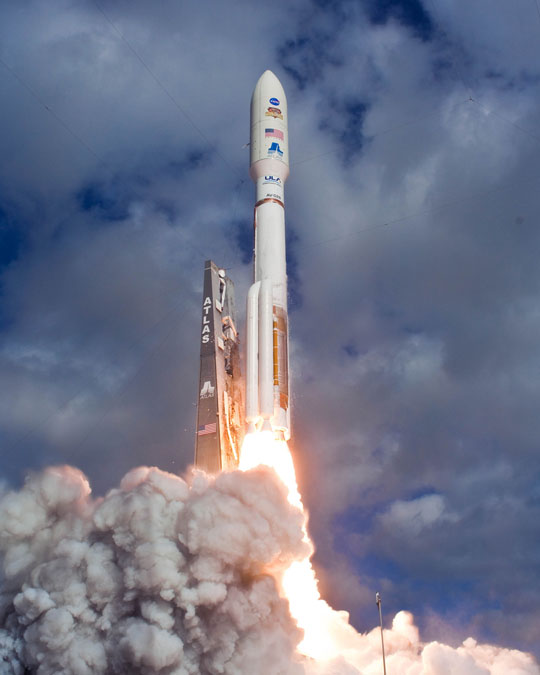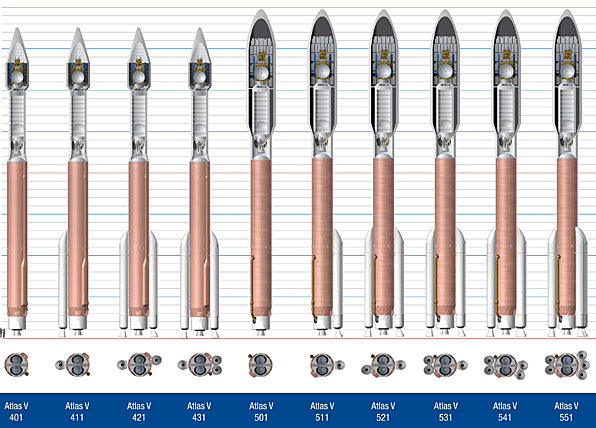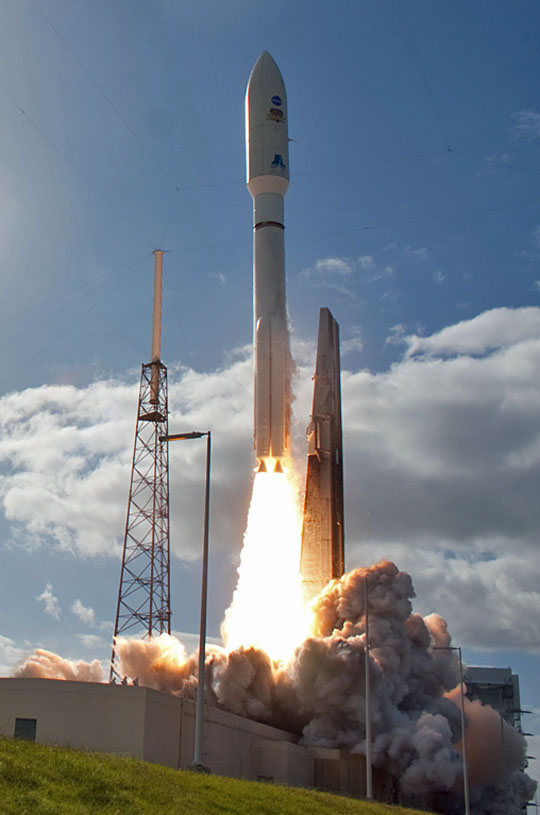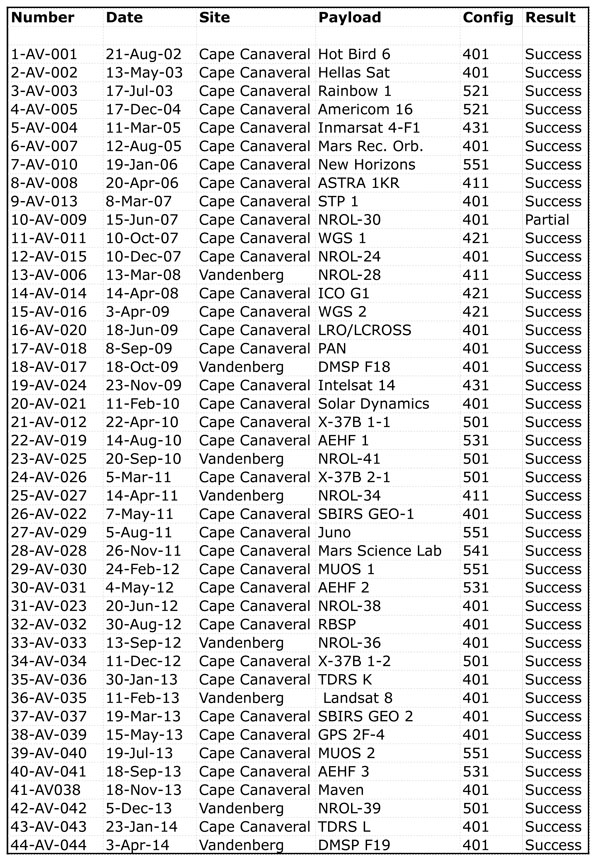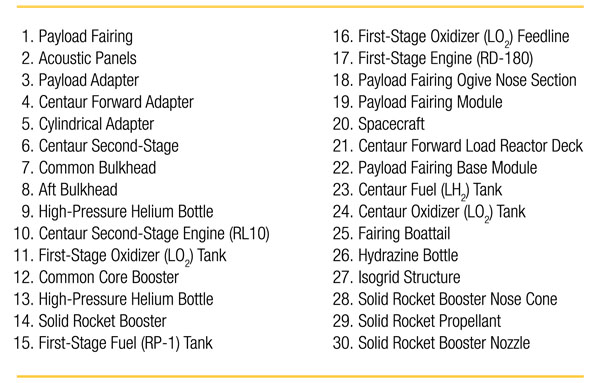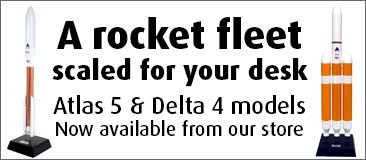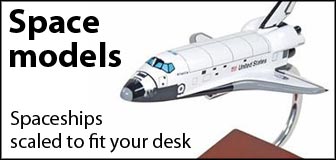Atlas/NROL-67 information sheet
A United Launch Alliance Atlas 5-541 rocket (AV-045) will be used to launch the NROL-67 mission for the U.S. National Reconnaissance Office, the agency that controls the country's fleet of spy satellites. The identity and purpose of the satellite being launched on the Atlas are classified. The vehicle will stand 19 stories tall and produce 2.1 million pounds of thrust at launch. The vehicle's performance is capable of delivering 7,800 pounds directly into geosynchronous orbit 22,300 miles above Earth or 38,000 pounds into low-Earth orbit.
The rocket launching NROL-67 was born of the Air Force's commercial competition to develop next-generation Evolved Expendable Launch Vehicles. It has flown 44 times since debuting in 2002, carrying out 16 flights dedicated to the Defense Department, 11 missions for NASA, nine flights with commercial payloads, and eight with spy satellites for the National Reconnaissance Office. Atlas 5 was built to be more robust and reliable over earlier Atlas and Titan heavy-lift vehicles, and streamlined production has resulted in fewer opportunities for human error. The launcher builds upon the success of its predecessors, using the Russian-made RD-180 main engine, a stretched Centaur upper stage and its RL10 engine that were proven during the Atlas 3 program. The key piece that sets Atlas 5 apart, however, was the rigid body Common Core Booster serving as the rocket's first stage. The CCB replaced the "balloon" pressure-stabilized stage used by previous Atlas vehicles. As the CCB's name suggests, the stage is common and is used in all the various configurations of the Atlas 5 family. The booster stage is 106.6 feet long and 12.5 feet diameter. There are two distinct types of Atlas 5 rockets -- the 400 series and 500 series -- each tailored to launching a certain class of satellite. The 400 series uses a four-meter diameter payload shroud and has flown 28 times. The 500 series, distinguished by a five-meter fairing, has launched 15 times.
Powering the Atlas 5 during the first four minutes of flight is the RD-180 liquid-fueled engine. The liquid oxygen/kerosene powerplant is a two-thrust chamber, two-nozzle engine made by NPO Energomash of Khimky, Russia. It was developed from the RD-170 engine used by Russia's Energia-Buran space shuttle, the Energia-M and Ukrainian Zenit rockets. Featuring hypergolic ignition, the engine produces 860,000 pounds of thrust and is throttled up and down to ease the stresses the rocket experiences throughout the launch. And its dual nozzles provides superior steering control during the climb out. The American propulsion firm Aerojet Rocketdyne financed the development of the RD-180 for the Atlas program. NPO Energomash is a partner of RD AMROSS, the joint venture formed to market, sell and distribute the RD-180 engines. The workhorse Centaur upper stage has flown in various configurations for decades. For this launch, the stage will use one Aerojet Rocketdyne-built RL10A-4-2 liquid oxygen/liquid hydrogen engine that develops a thrust of about 22,300 pounds. The Centaur will fire three times during ascent, initially boosting itself and attached satellite into a parking orbit around Earth after separation from the first stage. A second burn then propels the payload into a highly elliptical geosynchronous transfer orbit, followed by a long coast phase before a final push is delivered to raise the orbit's low point and reduce inclination relative to the equator. The stage is 41.5 feet in length and 10 feet it diameter. It also houses the navigation unit that serves as the rocket's guidance brain.
Each booster stands 67 feet tall, has a diameter of just over five feet and weighs 102,000 pounds at launch. The slender white rockets have a lightweight graphite epoxy casing with an erosion-resistant insulation. The solid fuel is high-performance class 1.3 HTPB propellant. Atop the booster is an aerodynamically-shaped graphite epoxy nose fairing. Each motor has forward and aft attachment structures to the Atlas 5's first stage. The motor nozzle is carbon-phenolic. The motor burns for 90 seconds, generating a maximum thrust of approximately 400,000 pounds and an average of 280,000 pounds. RUAG Space of Zurich, Switzerland produces the five-meter diameter nose cone that covers the satellite cargo during the first minutes of launch as the rocket accelerates through the atmosphere. The Atlas 5 shrouds are the largest lightweight composite payload fairings ever built. A layer of cork is applied to the outer surface of the fairing to shield against the heating of ascent. An electrically conductive white paint is then applied over the cork to avoid electrical charges. The inside has an acoustic protection system to lessen the intense sound during launch for the payload. To give the fairing structural support against lateral loads during the ascent, the "Centaur Forward Load Reactor" deck was designed. This aluminum ring extends from the Centaur to the fairing's inner wall. It separates in two halves moments after the fairing is jettisoned during launch. The Russian RD-180 first stage main engine can accomplish the entire job of steering the Atlas 5 during launch, thus the solid boosters feature simple, fixed nozzles.
In its newest era, the Atlas 5 rocket sent the Mars Reconnaissance Orbiter to the red planet in 2005, propelled the New Horizons probe toward Pluto and the solar system's outer fringes in 2006, doubled up with the dual Lunar Reconnaissance Orbiter and LCROSS impactor to the Moon in 2009, hurled Juno to Jupiter last August and dispatched the car-sized Curiosity rover on the Mars Science Lab mission in November 2012 and the Mars-bound MAVEN orbiter this past November. Atlas 5 FactsThis will be:
Atlas 5 Flight History
|
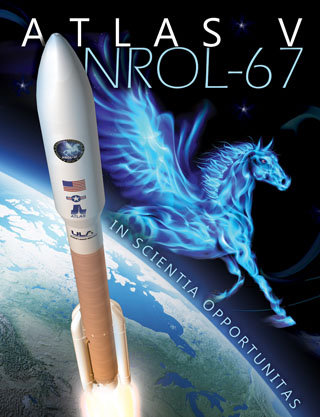 ULA poster 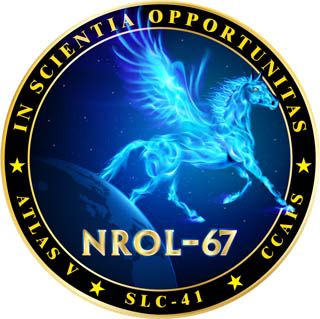 NRO patch 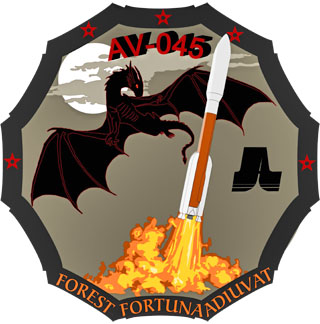 5th Space Launch Squadron patch 
Space video for your computer, iPod or big screen TV
Experience the space program like never before become a subscriber today |


